According to the Bureau of Labor Statistics CPI report released on November 14th, Annual Inflation was down to 3.2% in October.
(but since we calculate it to two digits, it was actually down to 3.24%.)
Monthly inflation was 0.44% in August, 0.25% in September, and -0.04% in October. So it certainly looks like inflation is falling. The stock market took this as a “positive surprise” and went on to rally. We had been projecting this decrease due to numerical anomalies for several months. Typically the 4th quarter has low or negative monthly numbers but October 2022 was very high thus the “surprise” as the new numbers were normal (i.e. much lower). Unfortunately, December holds the opposite type of “surprise” and to a much lesser extent, November does as well.
October 2023 Inflation Summary:
- Annual Inflation fell from 3.70% to 3.24%
- CPI Index fell from 307.789 to 307.671 (August was lower at 307.026)
- Monthly Inflation for October was -0.04%
- Next release December 12th, 2023
| Jan | Feb | Mar | Apr | May | June | July | Aug | Sep | Oct | Nov | Dec | |
| 2022 | 7.48% | 7.87% | 8.54% | 8.26% | 8.58% | 9.06% | 8.52% | 8.26% | 8.20% | 7.75% | 7.11% | 6.45% |
| 2023 | 6.41% | 6.04% | 4.98% | 4.93% | 4.05% | 2.97% | 3.18% | 3.67% | 3.70% | 3.24% |
As you can see our projection for October landed on the likely low line.
Moore Inflation Predictor
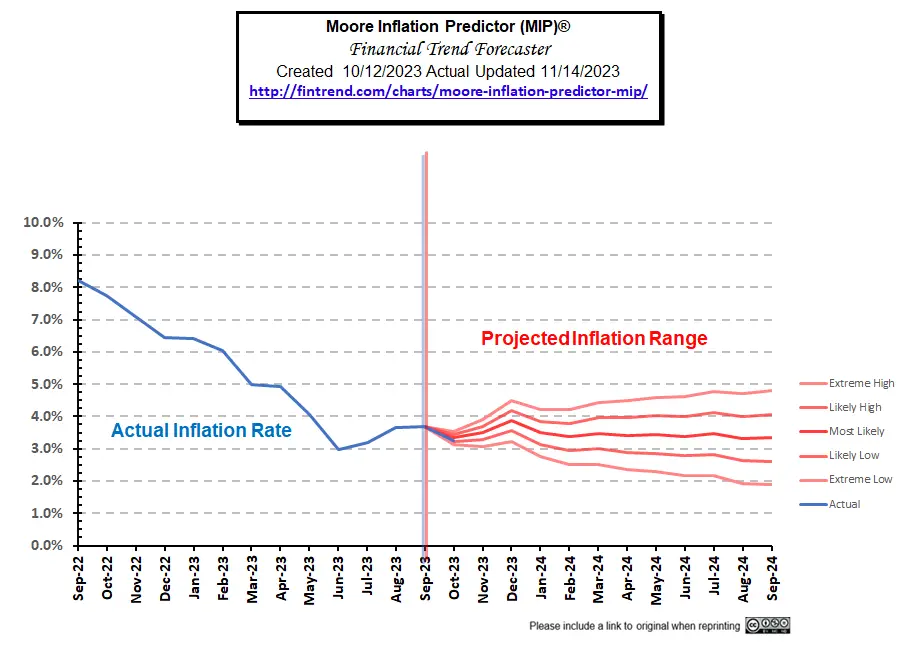 Go here to view our current MIP projection.
Go here to view our current MIP projection.
BLS Commentary:
The BLS Commissioner reported:
The Consumer Price Index for All Urban Consumers (CPI-U) was unchanged in October on a seasonally adjusted basis, after increasing 0.4 percent in September, the U.S. Bureau of Labor Statistics reported today. Over the last 12 months, the all items index increased 3.2 percent before seasonal adjustment.
The index for shelter continued to rise in October, offsetting a decline in the gasoline index and resulting in the seasonally adjusted index being unchanged over the month. The energy index fell 2.5 percent over the month as a 5.0-percent decline in the gasoline index more than offset increases in other energy component indexes. The food index increased 0.3 percent in October, after rising 0.2 percent in September. The index for food at home increased 0.3 percent over the month while the index for food away from home rose 0.4 percent.
When the commissioner says unchanged, he is talking about the “Seasonally Adjusted monthly number” not the annual inflation. That is the first number in the October 2023 column below.
As we can see from the chart below Energy declined significantly in October helping to pull down the overall index while services are still rising keeping inflation high.
Although these “Seasonally Adjusted” numbers are slightly different than those presented by the BLS, the following chart from the Federal Reserve shows the gap between inflation with and without Food and Energy. Comparing the two we can see how much food and energy are contributing toward overall inflation.
If the blue line is above the red line, food and energy, are adding to the overall inflation rate. But if blue is below the red line, they are actually mitigating overall inflation. As the blue line rose toward the red line from June through August, we noted that energy was doing less to keep down overall inflation. But this month the red line moved downward slightly while the blue line was down sharply. So, as we can see from the above table, energy was down significantly driving the “all-items” blue line down but everything else is still inflating at just over 4%. So is inflation 3.2% or 4%? When energy is dragging inflation up, the gov’t wants to use the numbers excluding food and energy… but now?
Source: St. Louis FED
Overall energy prices have been down over the last year because the government has been flooding the market with cheap oil by depleting our strategic petroleum reserves. But at some point, they are going to have to replace those reserves (perhaps at much higher prices). Note: Reserves would have started at much higher levels had Democrats not refused Trump’s request to increase reserves when oil was cheap.
This chart from the U.S. EIA shows the extent of the recent strategic petroleum reserve drawdown compared to those of Desert Storm, various hurricanes, and other supply disruptions. Unfortunately, the E.I.A. is always a couple of months behind in updating its chart. But with the data we have we can see that the recent draw-down dwarfs all of the others combined. In July 2020, the SPR stood at 656,140,000 barrels.
As of June 2023, the SPR was down to 347,158,000 or roughly -47.1% below July 2020 levels, which were already below 2010 levels. From January to February, levels were unchanged, so we were hoping that they had halted the drawdown, but drawdowns continued through June. By August there was a slight increase to 350,330,000 (the most recent data available). This reduces the drawdown from -47.05%, in July to -46.6%, i.e., 1/2 of 1%. Of course, this was back in August we have no idea whether another SPR drawdown helped October energy prices fall so much.
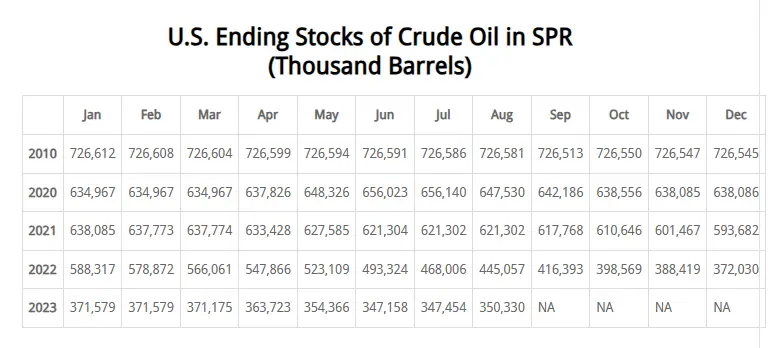 According to the statutory drawdown rules this drawdown looks illegal. The rules regarding drawdown of the SPR are:
According to the statutory drawdown rules this drawdown looks illegal. The rules regarding drawdown of the SPR are:
In no case may the Reserve be drawn down –
(A) in excess of an aggregate of 30,000,000 barrels with respect to each such shortage;
(B) for more than 60 days with respect to each such shortage;
Since the drawdown has been going on for over a year and a half, and is currently about 9x higher than the max in section A it doesn’t look Kosher to me. Also, I don’t see anywhere on the EIA site where it explains how the current drawdown deal works. Typically, oil is loaned and repaid with more oil at a later date… is this happening or is it being sold for cash? If cash where is all that money going? Are any kickbacks involved? Who knows? I suggest you write your Congressmen and Senators and ask these questions. You can find your Representatives here.
Inflation Chart since 1989
Beginning in 1989, the longer-term trend was downward until 2021.
(Note the declining “previous resistance” line.) But… Early in 2021, inflation started spiking and quickly broke through the channel’s top and then exceeded the pink previous resistance line with barely a hiccup as it passed through. Now inflation has crossed back down into that channel (with April generating another hiccup as it passed through). With falling gasoline prices, October 2023, saw annual inflation decrease from 3.70% in September to 3.24% in October.
FED Actions
Back in April 2020, we published the March FED Assets chart showing that FED assets could easily reach 9 Trillion…
And two years later, that is precisely what happened. FED assets peaked at 8.965 Trillion on April 13th, 2022.
By December 7th, FED assets were down to 8.582 Trillion, and on March 1st, they had bottomed at 8.39 Trillion, for roughly a 2/3 Trillion decrease. (As we can see from the chart below, that is still only a fraction of QE5 alone, which started at around 7 Trillion).
But then a banking crisis broke out in California, and the FED jumped it back up to 8.733 trillion on March 22nd wiping out roughly 38% of the gains they made. Since then, the FED has been decreasing assets again and assets are down just over a Trillion from the peak at 7.861 trillion. So, the reduction is about half of QE5 but then there is still QE 1-4 … and the other half of QE5.
See more commentary on FED Actions here, here, and here.
Monthly Inflation Compared to Previous Years:
The monthly inflation rate for October 2023 was -0.04%
In the chart below, we can see how the monthly inflation compares between 2019 (light green), 2020 (light blue), 2021 (pink), 2022 (red), and 2023 (orange). 2022 started out with very high monthly inflation 0.84% (January), 0.91% (February), and 1.34% (March) even for the first quarter of a year when monthly inflation is already at its highest. Typically, monthly inflation is highest from January through May, often in the 0.30% to 0.50% range.
May 2022’s 1.10% was extremely high even for the high months, so being replaced by the relatively low 0.25% of May 2023 knocked annual inflation way down.
Typically, in June, inflation moderates into a lower range, but in 2022 monthly inflation in June was also high, i.e., 1.37%. So the two-month inflation for May and June alone was 2.49%.
But then comes July 2022 which had negative monthly inflation (i.e., disinflationary), although it was virtually zero. So, monthly inflation of 0.19% in July 2023 increased the annual inflation rate to 3.18% and August 2023’s 0.44% was significantly higher than August 2022’s -0.04%.
Usually, monthly inflation is very low or even negative from October through December, helping to reduce annual inflation. But this October we saw a decline in the annual rate as the 0.41% of 2022 was replaced by -0.04%.
Not Seasonally Adjusted Monthly Inflation Rates
Note: January 2022’s 0.84% was the highest January since 1990. June was the highest June since 1941 (although the first quarter of 1980 had some higher rates). Typically, June is the beginning of lower monthly rates.
| Jan | Feb | Mar | Apr | May | Jun | Jul | Aug | Sep | Oct | Nov | Dec | |
| 2016 | 0.17% | 0.08% | 0.43% | 0.47% | 0.41% | 0.33% | (0.16%) | 0.09% | 0.24% | 0.12% | (0.16%) | 0.03% |
| 2017 | 0.58% | 0.31% | 0.08% | 0.30% | 0.09% | 0.09% | (0.07%) | 0.30% | 0.53% | (0.06%) | 0.002% | (0.06%) |
| 2018 | 0.54% | 0.45% | 0.23% | 0.40% | 0.42% | 0.16% | 0.01% | 0.06% | 0.12% | 0.18% | (0.33%) | (0.32%) |
| 2019 | 0.19% | 0.42% | 0.56% | 0.53% | 0.21% | 0.02% | 0.17% | (0.01%) | 0.08% | 0.23% | (0.05%) | (0.09%) |
| 2020 | 0.39% | 0.27% | (0.22%) | (0.67%) | 0.002% | 0.55% | 0.51% | 0.32% | 0.14% | 0.04% | (0.06%) | 0.09% |
| 2021 | 0.43% | 0.55% | 0.71% | 0.82% | 0.80% | 0.93% | 0.48% | 0.21% | 0.27% | 0.83% | 0.49% | 0.31% |
| 2022 | 0.84% | 0.91% | 1.34% | 0.56% | 1.10% | 1.37% | (0.01%) | (0.04%) | 0.22% | 0.41% | (0.10%) | (0.34%) |
| 2023 | 0.80% | 0.56% | 0.33% | 0.51% | 0.25% | 0.32% | 0.19% | 0.44% | 0.25% | (0.04%) |
See: Monthly Inflation Rate for more information and a complete table of Unadjusted Monthly Rates.
Misery Index
Current Misery Index: Unemployment 3.9% + Inflation 3.24% = 7.14%
So unemployment is up by 1/10th of a percent but inflation is down so the misery index fell from 7.50% to 7.14%. Both of these numbers are leading the stock market to believe that the FED won’t tighten further.
[Read More on the Misery Index…]
NYSE Rate of Change (ROC)
In February 2023, the NYSE- ROC crossed back above its 12-month moving average, generating a BUY Signal…
Prior to the inflation-inspired rally, the NYSE ROC was very near a sell signal although the NASDAQ was not.
For more information, see NYSE Rate of Change (ROC) and NASDAQ ROC Chart.
You Might Also Like:
From InflationData.com
- The Source of the Eurozone’s Economic Woes
- The Great Phony Disinflation
- How Germany is Fudging Their Inflation Numbers
From Financial Trend Forecaster
- NYSE ROC Chart
- NASDAQ ROC Chart
- If the Economy Is So Great, Why Are Tax Revenues So Weak?
- Bidenomics: Boom or Bust?
- Could a Hamas vs. Israel War Trigger a Worldwide Recession?
- The Dangerous Myth of a “Soft Landing”
- The Crux of China’s Problems
- Will a New BRICS Currency
From UnemploymentData.com.
- Unemployment Report for October 2023
- 10 Job Hazards Everyone Should Watch Out For No Matter Their Industry
- 5 Powerful Ways to Find Your Next Job Online
- Signs of a Great (and Not So Great) Staffing Agency
- Understanding the Rules of Workers’ Compensation Benefits – What You Can and Cannot Do
From Elliott Wave University
- Mini-Manias: Beware Short-Term Trading Frenzies – Like This One
- Why You Should Expect a Once-in-a-Lifetime Debt Crisis
- Why Do Traders Really Lose Money?
- Quick Takes on Big Financial Trends
- Extremely Rare Market Signal Just Triggered
From OptioMoney
- Financial Resilience in Uncertain Times
- Moving Abroad on a Budget:
- Give Your Brand the Refresh It Deserves
- DIY vs. Professional Movers
- 7 Ways to Increase the Value of Your Home
From Your Family Finances
- Renting vs. Buying After a Move
- Have Poor Credit? 5 Things You Can Do to Help Yourself
- Tips for Buying an Investment Property
- How Much You Should Be Saving for Unexpected Home Repairs
- Transforming Your Money Mindset for a Brighter Future

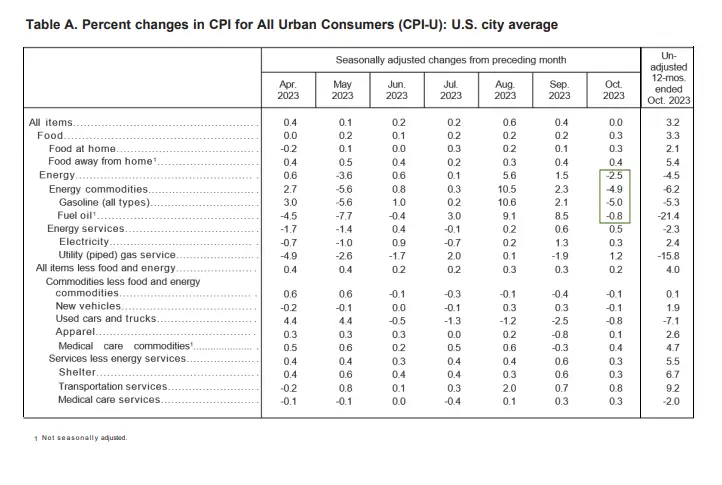
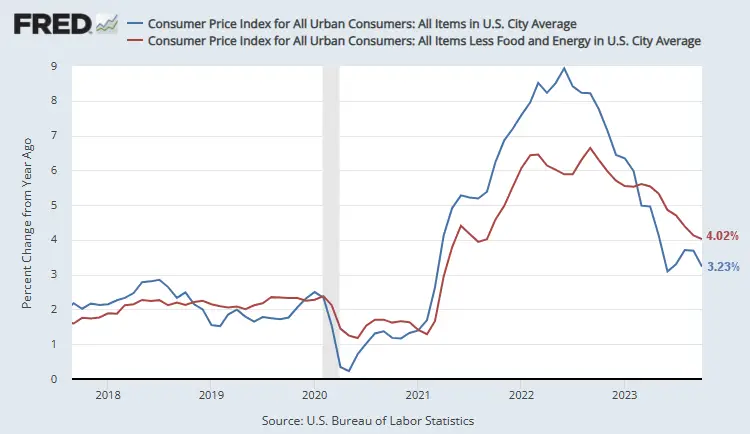
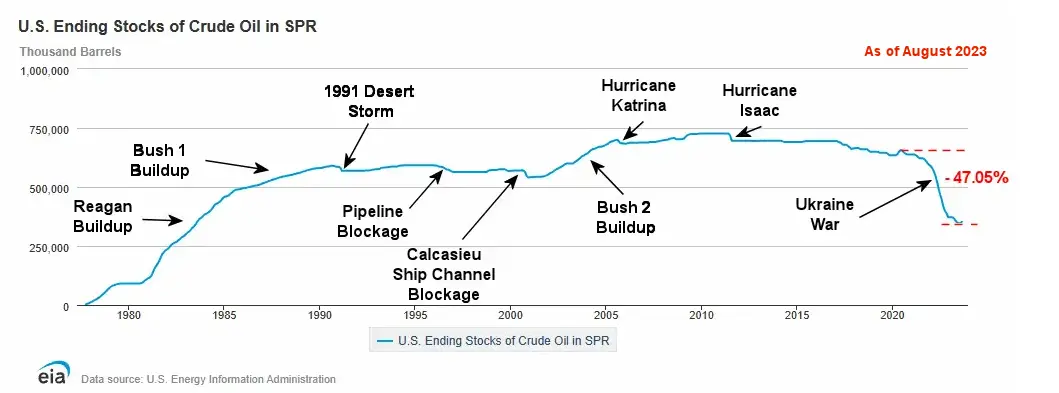
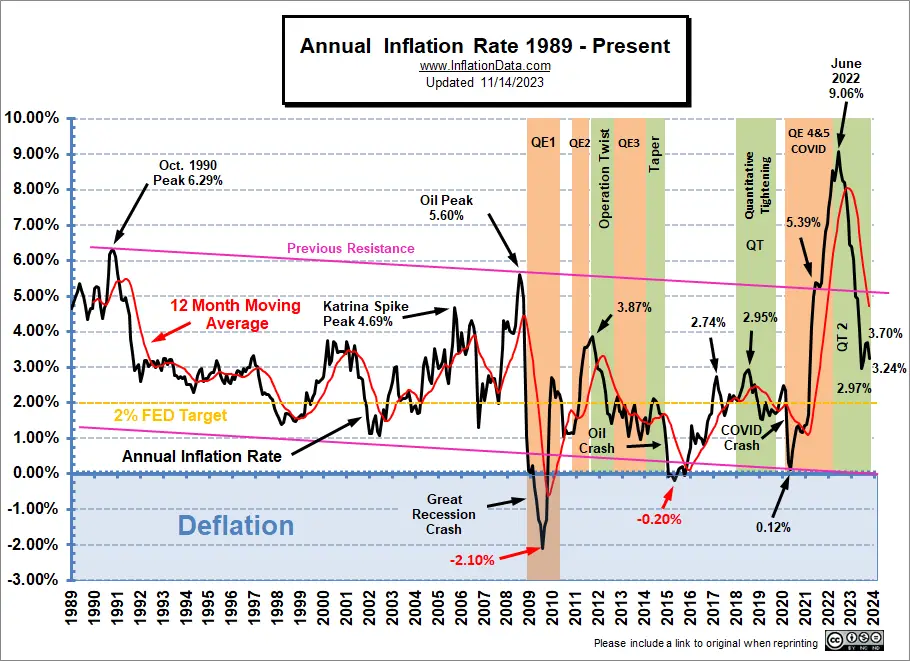
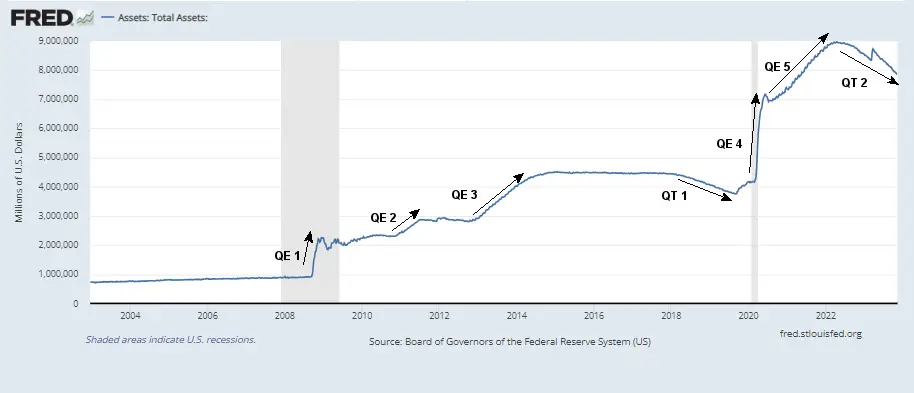
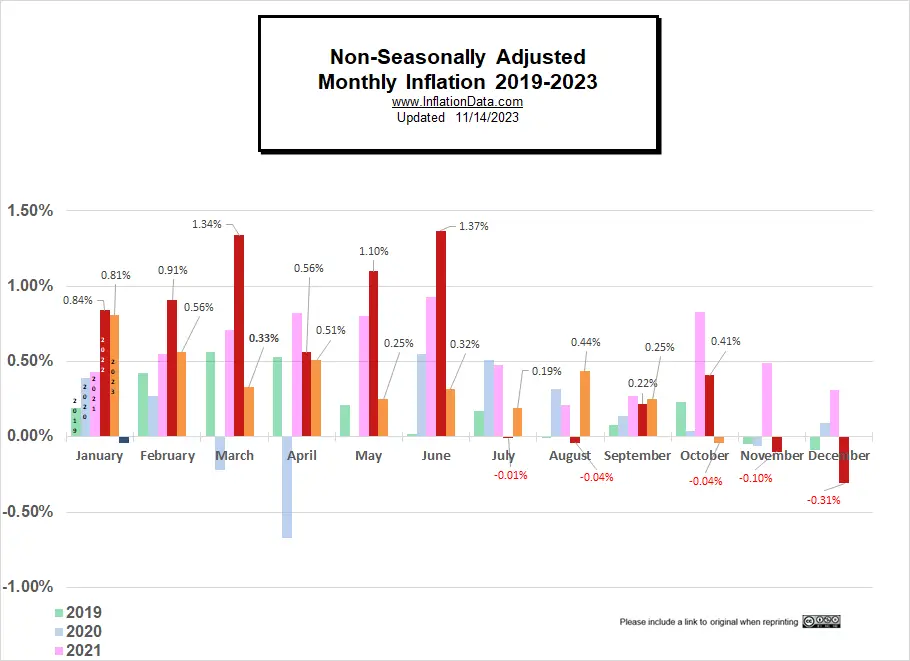
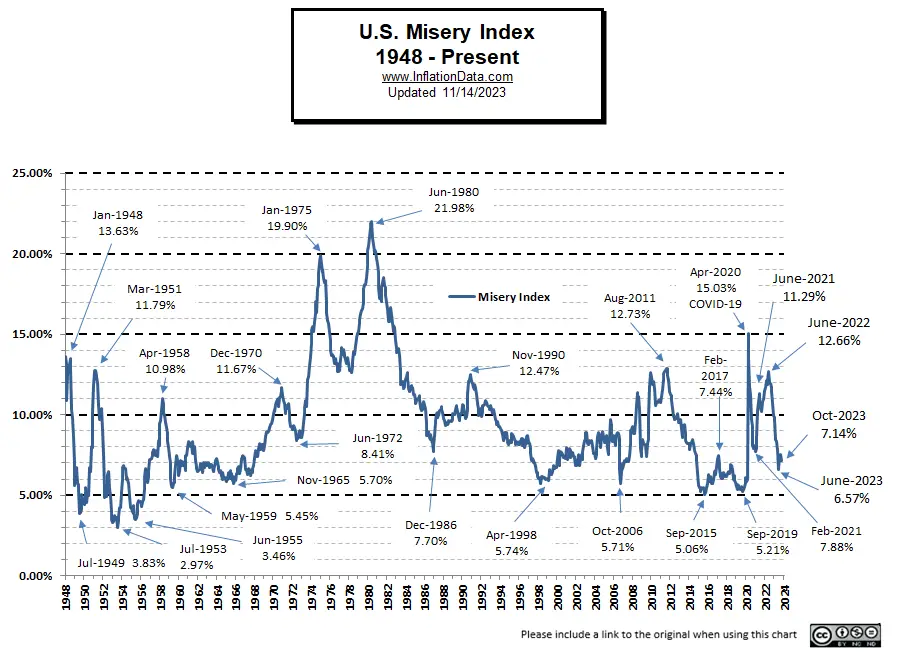
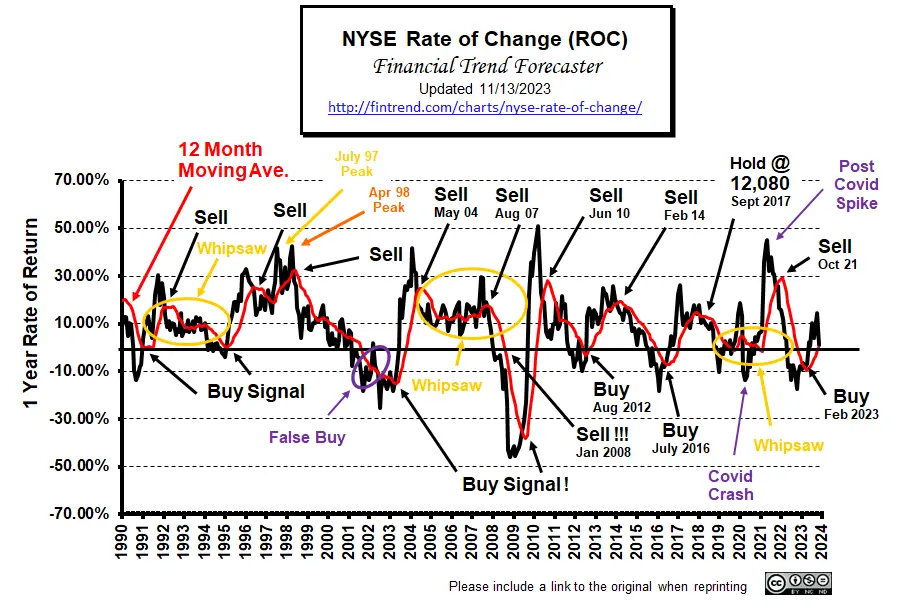

Leave a Reply